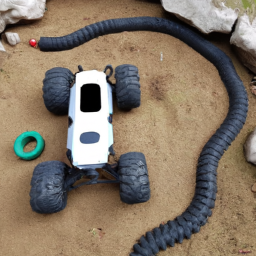Backyard Course Ideas RC Crawler
Table of Contents []
Rc Crawler Backyard Course Ideas
Introduction
Remote-control (RC) crawler courses have become a popular past-time for those who enjoy off-roading and exploring the outdoors. Whether it's racing RC crawlers up ramps or carving loops around your backyard, an RC crawler course offers an exciting and interactive way to enjoy your hobby. In this article, we'll outline some of the key components that go into building an RC crawler course, as well as providing some helpful tips on setting up the course.
Building an RC Crawler Course
Choosing the Right Terrain
The first step in building an RC crawler course is to choose the right terrain. You'll need to consider what type of surface you want to drive on, such as grass, dirt, or sand. Additionally, you'll need to choose the size of your terrain, as well as the obstacles you'll be incorporating into the course.
Layout and Design
After you've chosen the right terrain, it's time to design the layout and design of your course. You'll want to consider incorporating obstacles such as jumps, ramps, and curves into the course, as these will create a challenging and fun experience for your RC crawler. Additionally, you may also consider adding features such as gravel pits or mud pits to simulate off-roading conditions.
Power Source
One of the key components to consider when building an RC crawler course is the power source. Choosing the right power source will depend on the size and type of course you're building. The most common power sources for RC crawlers are electric motors, fuel, and nitro fuel.
Parts and Accessories
Once you've decided on the layout, design, and power source for your course, it's time to add the necessary parts and accessories. You'll need components such as drive shafts, tires, wheels, and shock absorbers to ensure a smooth and efficient ride for your RC crawler. Additionally, you may also want to consider purchasing spare parts in case something breaks or needs to be replaced.
Tools and Equipment
In order to build and maintain your RC crawler course, you'll need the right tools and equipment. The most basic toolkit should include wrenches, screwdrivers, pliers, and hammers. Additionally, you may also need other specialized tools such as an RC crawler lift, a tire pressure gauge, and a soldering iron.
Safety Gear
Due to the potentially dangerous nature of RC crawlers, it's important to invest in the necessary safety gear. The most basic safety gear for an RC crawler course includes protective gear such as gloves, helmets, and goggles. Additionally, you may also want to consider purchasing a fire extinguisher in case of a catastrophic accident.
Lights and Signage
When setting up your RC crawler course, it's important to consider lighting and signage. Having adequate lighting will ensure that everyone on the course can see clearly at night, while signage can be used to mark the boundaries and/or provide safety warnings.
In Summary
If you're looking to build an RC crawler course in your backyard, there are a few key components you'll need to consider. First, you'll need to choose the right terrain, and then design a layout and get the necessary parts and accessories. You'll also need to invest in the right tools and safety gear to build and maintain your course. Finally, make sure your course is properly lit and that there are adequate signage markers to mark the boundaries and provide safety warnings. By following the tips outlined in this article, you'll be well on your way to creating a fun and challenging RC crawler course.

Previous Page
Next Page
